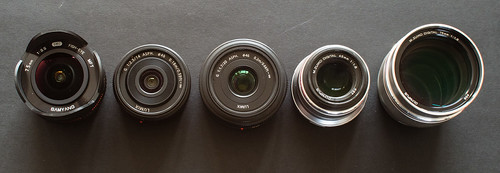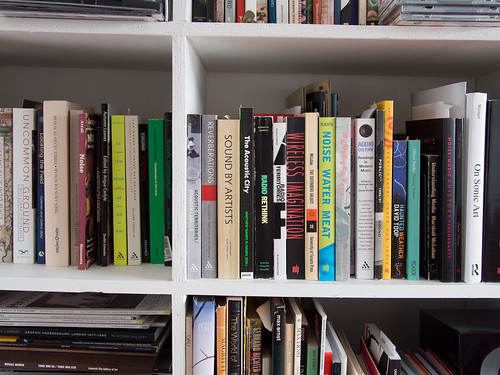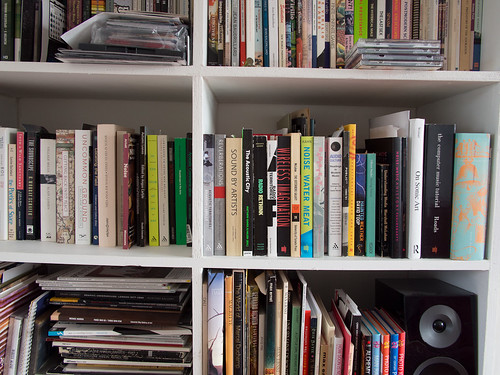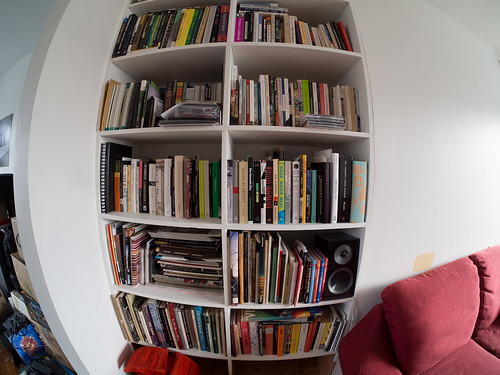
Introduction
The Micro-Four Thirds (MFT) camera format has proven to be very popular. The cameras are small enough to be portable and the sensor large enough to take excellent images. A sensor half the size of 35mm film turns out to be a good compromise. Olympus has known this for some time; their original PEN film cameras took "half frame" shots. (35mm is often called "full frame" and I will retain this nomenclature.) The Digital PEN and OM-D line continue this heritage.
Certainly I am a convert, having moved from the Pentax APS-C sensor format. Pentax have some decent DSLR cameras but several lens price hikes ruined the value proposition. They also fumbled the ball badly when it came to the mirrorless revolution. Possibly only Fuji "get it" in the same way that Olympus/Panasonic do -- a well-designed mirrorless system offers enormous practical and photographic advantages over mirror-based tech.
The MFT consortium have churned out a non-stop stream of camera bodies. Noticing the benefits for video, the innovative firm Blackmagic Design have got in on the action. Even Kodak (remember them?) have an MFT camera. When it comes to lenses we are also spoilt for choice; manufacturers such as Voigtlander, Sigma, Samyang, SLR Magic, Kowa, and Schneider Kreuznach have thrown their hats into the ring. Of all the mirrorless camera formats, MFT has the richest array of glass, almost all of which is good to excellent quality.
This profusion is no doubt confusing for newcomers. In this article I will recommend a set of general-purpose prime lenses that are compact in size, light in weight, and inexpensive, but which don't compromise on quality. Because that is what MFT is all about!
For me, any lens that is too large or heavy becomes unwieldy on a small camera body, and in any case defeats the purpose of the MFT format. If you want ultimate image quality, and don't mind a bigger and heavier kit, you should probably be looking at a camera with a larger sensor.
I also will not consider zoom lenses, since I am simply not interested in the compromises they introduce.
Field of view
Before I begin the lens comparison, I will illustrate the field of view (FOV) range I will be covering, so that you have some idea of which might suit you best. The following photos were taken on a tripod, about 90cm distant from my bookshelf, a standard if rather unappealing subject. (If you want to examine more closely, click through to Flickr for larger versions.)Olympus M.Zuiko Digital 75mm f/1.8 ED (150mm equivalent)

Olympus M.Zuiko 45mm 1:1.8 MSC (90mm equivalent)

Panasonic Lumix G Vario 20mm F1.7 ASPH (40mm equivalent)

Panasonic Lumix G 14mm F2.5 ASPH (28mm equivalent)

Samyang 7.5mm f/3.5 UMC Fisheye (15mm equivalent)

Out of interest, this is the same image "defished" to a rectilinear perspective. Some will consider this to be a fairer FOV comparison.

Where possible I used autofocus and default exposure. I shot at ISO 400 and f/8 on the Olympus E-P5. The RAW files were processed through Lightroom with default settings. And I didn't worry myself much about getting the tripod aligned correctly, as you can see from the later shots! Close examination will also reveal a focus error for the fisheye image. These are perhaps not the best test shots to illustrate lens quality, but they do demonstrate field of view.
Coming soon!
In part two I will consider the available prime lenses and explain my recommendations.
RELATED POSTS
No comments:
Post a Comment